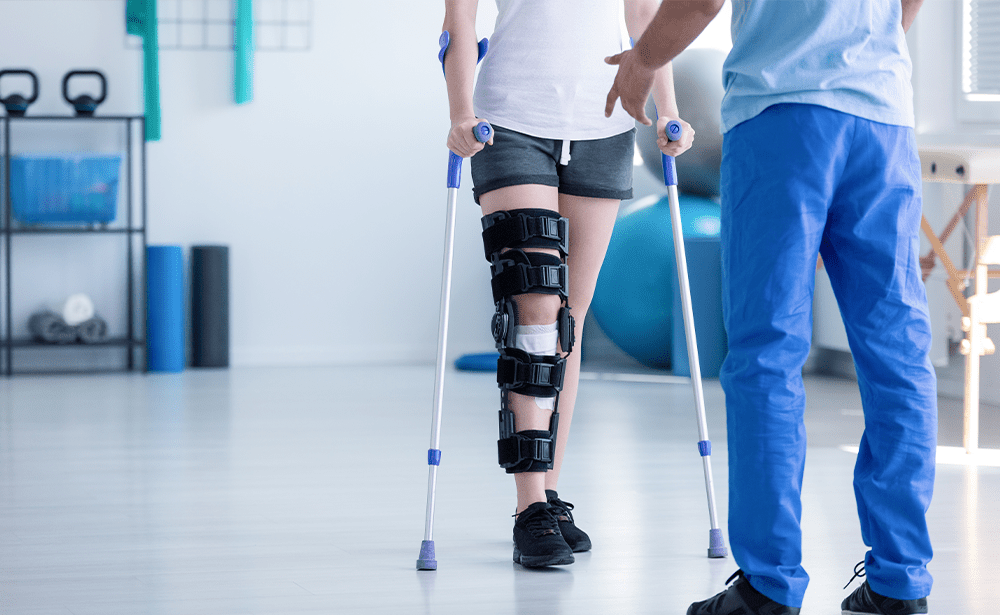Examples of Advanced Orthopedics That Are Changing the Healthcare Landscape
The evolution from traditional orthopedics to advanced orthopedics is truly something to behold. Orthopedic technology has come a long way, revolutionizing the diagnosis, treatment, and recovery of a wide array of musculoskeletal conditions.
These innovations have not only enhanced patient outcomes, but have also paved the way for more efficient and effective healthcare delivered by orthopedic doctors. In this blog, we’ll explore several groundbreaking examples of orthopedic technology and how they are being applied by physicians during treatment and orthopedic surgery.
8 Examples of Orthopedic Technology and Innovations
The field of orthopedics has grown by leaps and bounds in the past couple of decades. Orthopedic technology and modernized methods of treatment are helping patients recover quicker, mitigate complications, and provide useful data that can be used to monitor patient recovery and make key decisions.
#1 – 3D Printing
3D-printing technology applied to advanced orthopedics has enabled physicians to create customized instruments and implants that are specifically tailored for the patient. For example, orthopedic doctors can now create custom hip and knee implants using a medical-grade 3D printer. They can also create 3D-printed models that are used to plan out procedures, resulting in improved patient outcomes.
#2 – Robotic-Assisted Surgery
Robotic-assisted surgery systems offer orthopedic surgeons enhanced precision and accuracy when performing joint replacement procedures. By providing real-time feedback and navigational aid during orthopedic surgery, these systems mitigate errors and reduce the risk of patient complications. Of course, a human must oversee the surgery, but robotic-assistant systems are proving to be valuable tools in the operating room.
#3 – Augmented Reality (AR)
Augmented reality is no longer just for fun and entertainment. There are several practical applications for this technology, including orthopedic surgery. Orthopedic surgeons can use augmented reality for a real-time display of the patient’s anatomy, providing them with visual guidance like never before. Additionally, AR is used for orthopedic surgery training during practice exercises, providing a more accurate representation of a surgical environment.
#4 – Smart Orthopedic Implants and Wearables
Knowing how a customized implant or joint replacement performs has always been a question mark in the orthopedic space. However, with the advent of smart orthopedic implants and wearables, orthopedic doctors now receive detailed feedback from sensors that monitor the joints functionality and performance metrics in real-time. This enables orthopedic doctors to easily deduce if the joint or implant requires an adjustment, so they can address it in a timely fashion.
#5 – Artificial Intelligence (AI)
AI is popping up in several applications these days, and the world of advanced orthopedics is no exception. Using AI, orthopedic doctors can analyze patient data that assists them in identifying potential issues and patterns that can be used to make data-driven decisions. AI is used during the planning of orthopedic surgeries and procedures, for assessing risk, and to develop personalized treatment plans.
#6 – Telemedicine
Although treating patients remotely was born out of necessity during the COVID-19 pandemic, the benefits and convenience that it provides to patients and their physicians are too significant to ignore. In today’s healthcare landscape, telemedicine has become a popular method of treating patients who live in remote areas or who have transportation challenges that keep them from in-person visits.
#7 – Orthobiologic Treatments
Orthobiologics like platelet-rich plasma (PRP) therapy use the patient’s own naturally-occurring biological substances to stimulate tissue healing and regeneration. This approach is often used in sports medicine applications to promote quicker recovery and improved function.
#8 – Wearables and Health Monitors
When a patient is put on a recovery plan, it’s difficult to know how it’s going without an in-person visit. However, with the rollout of wearable technologies that monitor health data, this valuable information can be accessed remotely by orthopedic doctors and physicians. Using this piece of orthopedic technology, doctors can closely monitor a patient’s progress and real-time medical data.
Consulting with an Orthopedic Doctor Who Uses Advanced Orthopedics
Patients who have incurred a sports-related injury, musculoskeletal trauma, or a disease that causes joint pain and inflammation should seek out an orthopedic doctor for treatment. However, not all physicians use the same orthopedic technology, which is why it’s important to work with a group of orthopedic physicians who are committed to using the latest tools and technologies in the field.
During your initial appointment with an orthopedic doctor, they will typically break down the best treatment avenues for your specific condition. Although not all conditions require advanced orthopedics, it’s good to know that your orthopedic doctor is trained in using the most modern methods. Part of having an open dialogue with your doctor is knowing what resources they have at their disposal, including advanced orthopedic technology.

